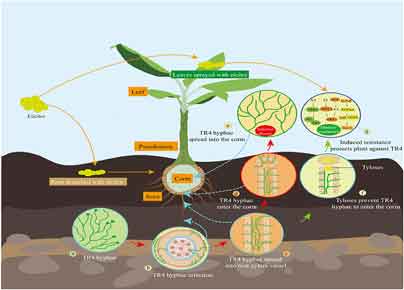Philippines: Researchers Explore Use of Bacteria and Fungi to Combat TR4
2025-05-02

According to the Philippine Statistics Authority (PSA), the estimated banana production from April to June 2023 was 2.29 million metric tons, reflecting an annual increase of 0.1 per cent compared to the same period in 2022.
Among the 20 known varieties of bananas in the Philippines, the Cavendish is the most common and widely cultivated. 2023 Cavendish bananas accounted for the highest production, with 1.17 million metric tons, representing 51.5 per cent of the total banana production.
Despite this high production level, banana growers face significant challenges due to plant diseases, particularly wilt diseases, TR4, which result in considerable losses. The Department of Science and Technology's Philippine Council for Agriculture, Aquatic, and Natural Resources Research and Development (DOST-PCAARRD) has identified the banana industry's main issue as its susceptibility to diseases such as banana bunchy top disease (BBTD), Sigatoka, and Fusarium wilt commonly referred to as Panama disease Race 4 or TR4.
Representatives from Hijo Resources Corp., one of the leading banana producers in the Davao region, reported that banana wilt affects around 3 to 5 per cent of their overall productivity.
To address this issue, researchers from USEP are investigating potential solutions to mitigate the harmful effects of FOC on bananas. Plant pathologist Vladimir Ivan Dodongan explained that FOC causes blockages in the plant's vascular vessels and infects bananas through fine root hairs, ultimately residing in the vascular bundle of the pseudostem.
In his study, Dodongan examined the effectiveness of Trichoderma harzianum, a fungus recognised as a biological control agent for managing pests and plant pathogens. "The results indicate a reduced manifestation or severity of the disease. While there is still some yellowing, it is less severe than untreated plants," Dodongan stated.
Meanwhile, Johanna Roselle Salvar, another plant pathologist at USEP, is testing whether bacterial endophytes derived from the roots of healthy banana plants can combat the fungus in infected Cavendish plants. "I found that bacterial endophytes from healthy banana roots show potential both in laboratory and greenhouse conditions, resulting in decreased severity of Fusarium wilt," Salvar reported.
Both Dodongan and Salvar are continuing to refine their studies. If their findings prove effective, these solutions could significantly support banana growers in managing plant diseases like Fusarium wilt. Recognising the importance of these research efforts, USEP is encouraging the next generation of experts to delve into plant pathology and explore its vast potential.









